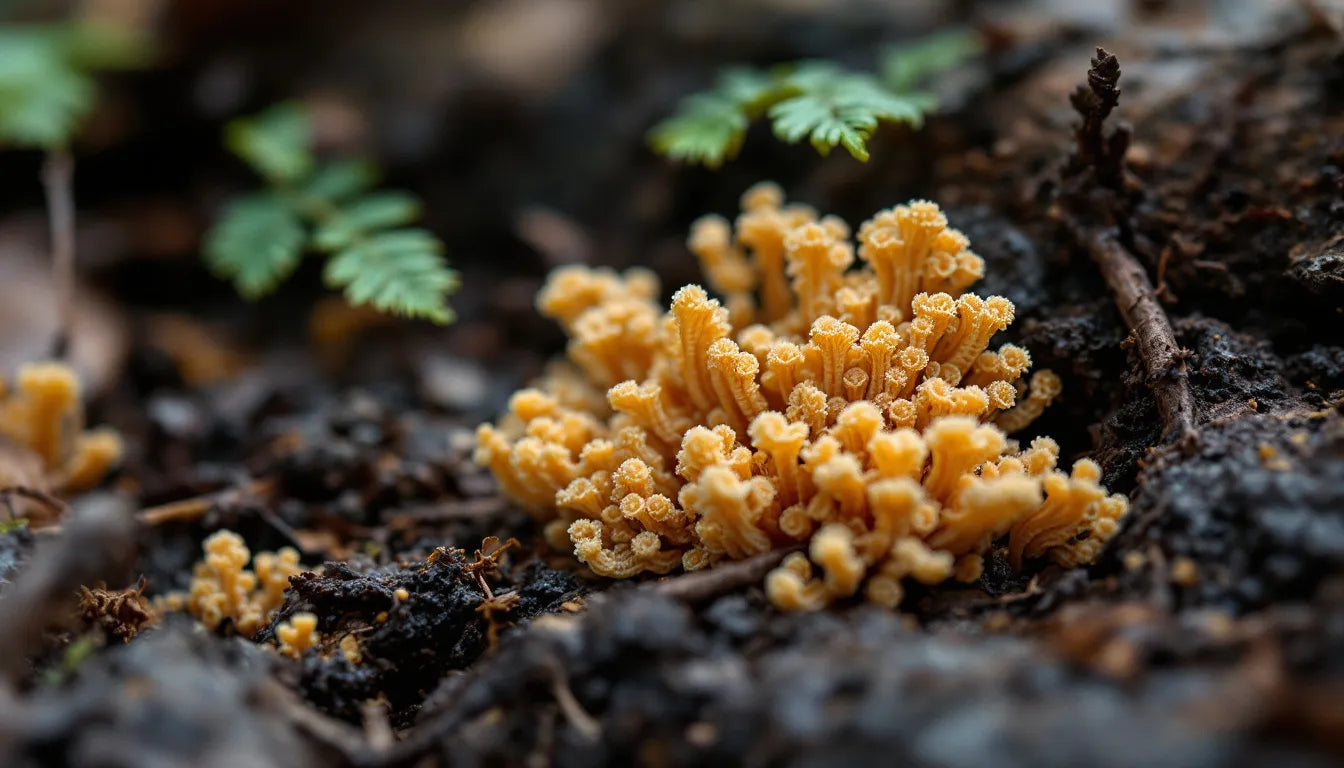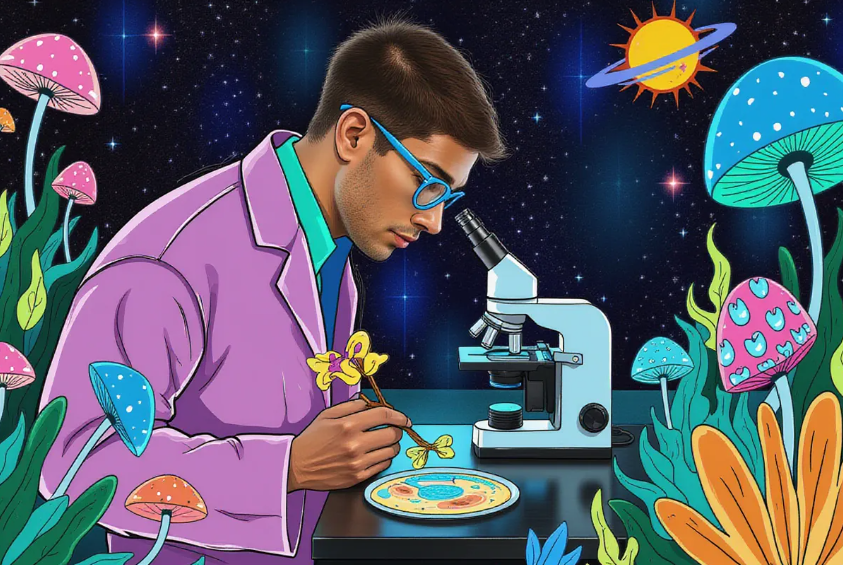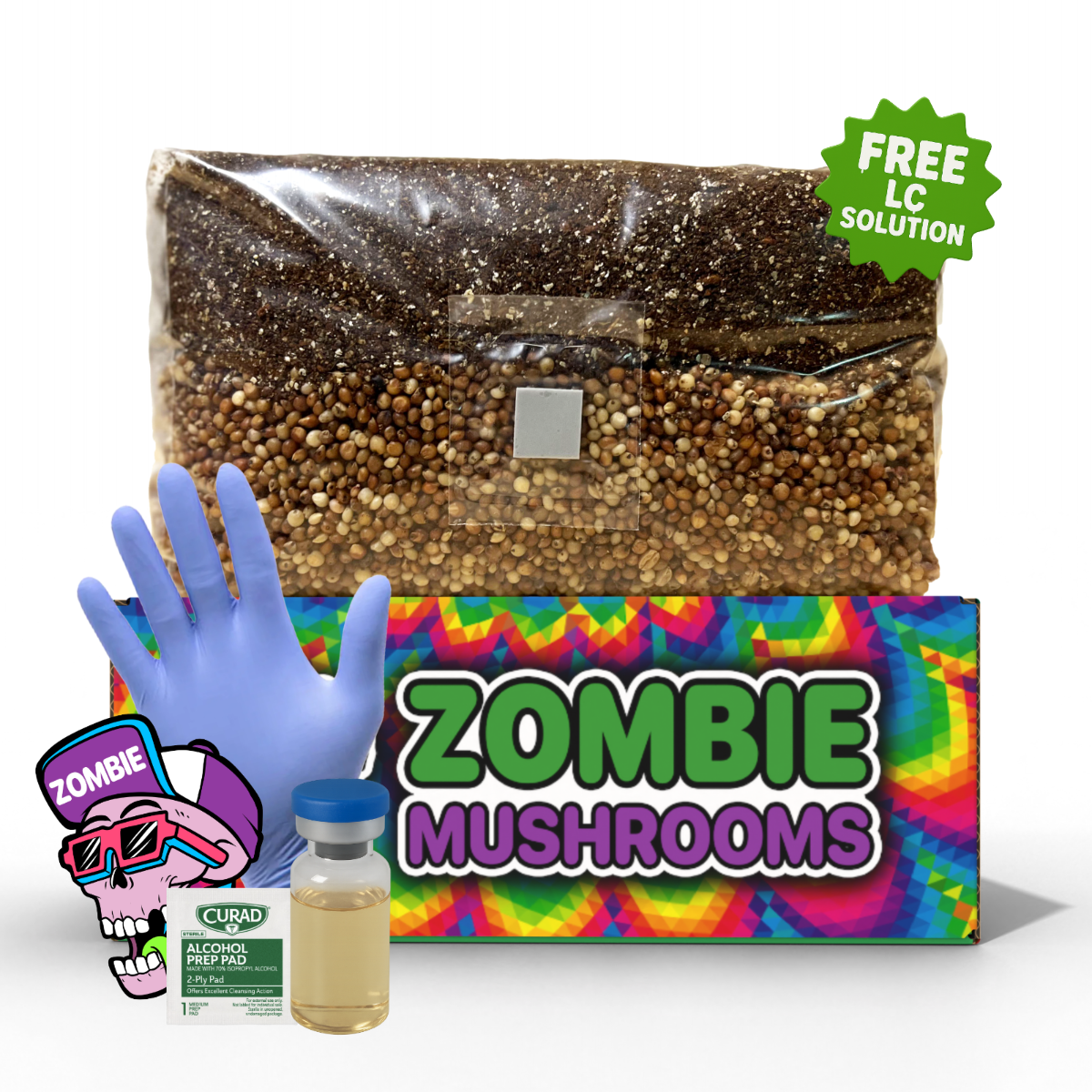⬇️ Prefer to listen instead? ⬇️

- Studies show mycelium and fruitbody offer distinct compounds that impact cognitive and immune functions differently.
- Fruitbodies have higher beta-glucan concentrations, known to support immune modulation and inflammation control.
- Some mycelium-based supplements may contain up to 60% grain starch, diluting their medicinal value if not processed properly.
- Full-spectrum supplements combining mycelium and fruitbody may offer more balanced and synergistic health benefits.
- Specific compounds like erinacines (mycelium) and hericenones (fruitbody) in Lion’s Mane target different nervous system pathways.

Understanding the Mushroom Anatomy
Mushrooms belong to the Fungi kingdom. This group of life works differently from plants or animals. One mushroom organism can be huge. It has underground networks that help it get nutrients, talk with its surroundings, and make more mushrooms. This organism has two main parts
- Mycelium: This is an underground or hidden network of threads called hyphae. It spreads out and breaks down dead stuff.
- Fruitbody: This is the part you see above ground. It grows when the mycelium is ready and when the environment is right.
The fruitbody might look like the whole mushroom we think of, but it's only a small part of the organism's life. Both parts are important, but they do different things in the mushroom's life.

The Mushroom Life Cycle in Brief
The mushroom life cycle starts with spores. These are tiny units, just one cell, that can travel in the air or water. When a spore finds a good place to grow, it sprouts into mycelium. This grows by sending out threads called hyphae. The network keeps growing, eating dead material around it and working with other organisms, especially in the soil.
When the mycelium colony is strong and the conditions are right—like the right humidity, temperature, and carbon dioxide—the mycelium makes small bumps called primordia. These grow into fruitbodies. The fruitbodies don't live as long as the mycelium, but they are very important for spreading spores and keeping the species going.
In this cycle
Knowing this cycle helps show what each part can do in supplements for people.

Mycelium: The Fungal Network Beneath the Surface
You often can't see mushroom mycelium. It works like the main system for the fungal world, always running in the background. It affects the soil, plants, and tiny living things in the ground. In forests, mycelium links trees with structures like roots, sharing food and signals. People sometimes call this the "Wood Wide Web."
Maybe more important for health uses, mycelium makes many different chemicals when it feeds on what it grows on. These include
- Enzymes that break down hard organic stuff,
- Compounds that fight microbes to protect against bacteria and other fungi,
- Polysaccharides outside the cells, like alpha-glucans, which might help the immune system work better.
So, mushroom supplements made from mycelium can give you different compounds than the fruitbody. People usually grow mycelium in clean liquid (liquid culture) or on clean grains like oats, rice, or rye. But growing on grain can mean there are grain pieces left in the final product.

Fruitbodies: The Above-Ground Reproductive Structures
Mushroom fruitbodies are the parts people know and eat in food. Besides how they taste and feel, fruitbodies have lots of
- Beta-glucans: These are types of fiber that dissolve in water. They help the immune system work by activating white blood cells like macrophages and NK cells.
- Triterpenoids: These bitter compounds are in mushrooms like Reishi. They are shown to help the liver detox, lower stress from oxidation, and help with inflammation.
- Ergothioneine: This is an antioxidant and amino acid that isn't common. It helps protect cells, especially in the nervous system.
Because the fruitbody has a stronger mix of active substances, many think it's a better ingredient for medicinal mushroom supplements. But it takes longer to grow, often months. And harvesting and preparing it is more complex, especially if it's grown on wood or outside.

What Active Compounds Do Mycelium vs Fruitbody Offer?
Here’s how each mushroom part contributes distinct benefits:
Mycelium
Alpha-glucans, unique peptides & enzymes, and external polysaccharides. These support digestive health, immune tone, and offer broader metabolite diversity.
Fruitbody
Rich in beta-glucans, triterpenoids (especially in Reishi), and antioxidants like ergothioneine and glutathione. Ideal for immune modulation and cellular protection.
Science papers, like summaries in Hobbs (2017), point out that fruitbodies usually have more beta-glucans. Mycelium, on the other hand, has a wider set of secondary compounds because it breaks things down.

Immune Benefits: Mycelium’s Broader Metabolite Profile
Lots of people use medicinal mushrooms to help their immune system. And research shows it's not just about having high amounts of beta-glucans. Hobbs (2017) says mycelium, especially when grown in controlled places, releases active proteins and small molecules. These can affect how macrophages work, how the body handles inflammation (cytokines), and other ways the immune system acts.
Studies show that other polysaccharides besides glucans—like arabinoxylanes and certain peptides—can also boost the body's natural and adaptive defenses. This makes a stronger argument for adding mushroom supplements made from mycelium to a full health plan.

The Fruitbody Argument: Purity and Potency
Mycelium has more types of active compounds, but fruitbodies are often valued because they have
- More of the main active compounds, like beta-glucans and triterpenoids.
- No growing material left (like grain), so the stuff is cleaner.
- A history of use in Chinese and Ayurvedic medicine, mainly for mushrooms like Shiitake, Maitake, and Chaga.
People who prefer pure forms or follow traditional medicine often choose fruitbody extracts. Extracts using both alcohol and water tend to be cleaner and have a more expected effect.

Grain-Based Mycelium: What to Look Out For
One common concern with mycelium vs fruitbody products is how much carrier grain remains in the final supplement. When mycelium grown on oats or rice isn’t separated from leftover grain, the result can be mostly starch—diluting the potency of mushroom compounds. Some products have been found to have up to 60% grain content. To ensure effectiveness, look for fruitbody extracts or full-spectrum formulas that clearly disclose active compound levels and verify third-party testing.
Upton et al. (2011) pointed out that some supplements have as much as 60% grain. This means they don't work as well for health. Sadly, the FDA lets products with just mycelium on grain be called "mushroom." This can confuse buyers.
To not get confused
- Pick fruitbody extract products if you want the purest beta-glucans.
- If you buy mycelium products, check that the companies list the amounts of active compounds and get tests done by others.

Whole Mushroom Philosophy: Why Use Both?
Some newer mushroom supplements focus on “full-spectrum” ingredients. This means they include mycelium, fruitbodies, and sometimes spores. This way of doing things aims for a wide range of effects.
This idea includes
- Mycelium: Compounds made early on, enzymes, compounds that signal the immune system.
- Fruitbodies: Developed antioxidants and glucans that are more concentrated.
- Spores (in some products): Very strong biological material with lots of triterpenes (especially in Reishi).
This gives a more total set of health effects. The active compounds work together and support each other. People who like this idea think it's like getting the full power of the mushroom's life and its role in nature, but in a supplement.

How to Read Mushroom Supplement Labels
Labels on supplements can be confusing. Here's how to understand what you're actually buying:
| Label Term | What It Means |
|---|---|
| Fruitbody Extract | Comes from the grown mushroom part; often taken out using water or alcohol |
| Mycelium on Grain | Mycelium grown on rice or oats; might have grain starch left |
| Dual Extract | Uses water and alcohol to get different types of compounds |
| Full-Spectrum | Has fruitbody, mycelium, and sometimes spores for the widest range of compounds |
| Beta-glucan % | The best way to know how much is there to help your immune system |
| Polysaccharide % | Often doesn't tell the whole story—can include starches that aren't active |
Being truly clear means listing the country it came from, test results, how it was made, and the exact amounts of specific compounds.

Practical Use Cases by Mushroom Type
Each medicinal mushroom works best in a certain form for supplements
Lion’s Mane (Hericium erinaceus)
- Mycelium: Has lots of erinacines. These are special compounds shown to boost nerve growth factor (NGF).
- Fruitbody: Has hericenones. These are good for keeping your mind sharp and balancing your mood.
Cordyceps (Cordyceps militaris / C. sinensis)
- Finding wild Cordyceps sinensis fruitbodies is rare. Most supplements use C. militaris mycelium. It still has main active compounds like cordycepin and adenosine for energy.
Reishi (Ganoderma lucidum)
- Fruitbody: High in triterpenoids and ganoderic acids. These help your body detox and deal with stress.
- Mycelium: Provides polysaccharides outside the cells. It still works well for helping the immune system.

Grow Your Own to Understand the Lifecycle Firsthand
Growing mushrooms at home is more than a hobby. It's a way to learn about the fungal world by seeing it yourself. Starter kits—like ones from Zombie Mushrooms—let you watch mushroom mycelium grow on its food material and then make fruitbodies.
Good things about growing your own
- You see how long each stage takes.
- You can watch how changes around it affect growth.
- You learn which active compounds are made at each step.
This helps you know more about supplements. And it starts you on a path to living healthier on purpose.
FAQ
-
Mycelium or fruitbody: which is better for immune support?
Fruitbody is generally richer in beta-glucans and triterpenoids, which are widely studied for immune-boosting effects. -
Does mycelium offer unique benefits?
Yes. Mycelium offers a broader metabolite profile, including enzymes, peptides, and prebiotic compounds not always found in fruitbodies. -
What is a full-spectrum mushroom product?
It combines both mycelium and fruitbody (and sometimes spores), aiming to deliver a wider range of active compounds. -
How can I tell if a supplement is mostly grain?
Check the label for % active compounds (like beta-glucans), look for notes about “mycelium on grain,” and seek third-party lab reports. -
Can growing mushrooms at home help me understand the mycelium vs fruitbody difference?
Absolutely. Using mushroom grow bags or kits, you can observe both stages—mycelial growth and the formation of fruitbodies—and better understand how each contributes to the final product.
It’s Not a Versus, It’s a Partnership
Thinking you have to pick between mushroom mycelium and fruitbody is like trying to choose between roots and flowers. Both are needed for the organism and for our health. The best choice isn't always one or the other. Good supplements tested by others, which clearly list what's inside and how they were made, can give you the good parts of both.
People who know more now often like full-spectrum mushroom supplements. This gets them a wider set of health benefits while making sure the product is strong and clean. No matter if you use mushrooms for your immune system, thinking, inflammation, or energy, knowing about both mycelium and fruitbody helps you manage your health.
To learn more, look at Zombie Mushrooms’ mushroom grow kits and full-spectrum extracts. These are made to teach, get you involved, and help you with using mushrooms for health.
Citations
- Hobbs, C. (2017). Medicinal Mushrooms: The Essential Guide. Storey Publishing.
- Stamets, P. (2005). Mycelium Running: How Mushrooms Can Help Save the World. Ten Speed Press.
- Upton, R., Graff, A., Jolliffe, G., & Länger, R. (2011). Reishi Mushroom: Ganoderma lucidum. American Herbal Pharmacopoeia.



